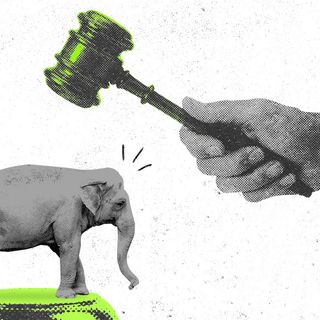In a study published last week in Nature Plants, scientists outlined a previously unknown process in plants that explains how they release carbon back into the atmosphere. The discovery has implications for our future too– as we look to plants being carbon sinks to tackle global warming.
The researchers found that in the process of photosynthesis, where plants take in water, sunlight, and carbon dioxide to release oxygen, they release half their carbon intake in the form of CO2 back into the atmosphere. “This stops plants [from] being the best sinks for carbon they could be and limits how much they are able to help lower atmospheric CO2,” Harvey Millar, a plant biochemist from the University of Western Australia, who was involved in the study, said in a press release.
“We found that plants control their respiration in a way we did not expect, they control how much of the carbon from photosynthesis they keep to build biomass by using a metabolic channel,” Millar told ScienceAlert.
Related on The Swaddle:
Plants Can ‘Warn’ Their Neighbors of a Herbivore Attack
It has to do with the mitochondria, which is a part of the cell responsible for CO2 release. The secret that plants have kept is that they “decide” when and how much CO2 to release back into the atmosphere — this negates their utility as storers of atmospheric carbon that they absorb. Plants produce a substance called pyruvate, a byproduct of sugar, and this is the key factor in the plant’s decision. At this stage, a plant can either burn the pyruvate as energy and release CO2, or store it for making biomass.
“We found that a transporter on mitochondria directs pyruvate to respiration to release CO2, but pyruvate made in other ways is kept by plant cells to build biomass — if the transporter is blocked, plants then use pyruvate from other pathways for respiration,” said Xuyen Le, who led the study.
This is the metabolic process that was previously unknown — and researchers note that it goes against the rules of biochemistry, which dictates that each step in a process is not “aware” of the source of the product from the previous step. Here, however, plants can “choose” to use pyruvate for respiration.
Researchers aim to find ways to “influence” the decision at the last moment by redirecting the pyruvate away from respiration and toward biomass building, in order to prompt plants to release less CO2 into the atmosphere.
While the research has big implications in terms of how plants can be leveraged to halt global warming and emissions, science is yet to figure out how to do so without disrupting their natural processes — even more than we already have.




